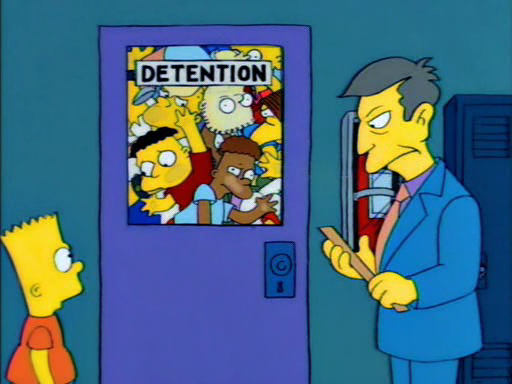California's Solution to Truancy 'Crisis': More Bureaucracy!
How much money will the state spend to try to capture the money it loses from students skipping school?


Today Democratic California Attorney General (and potential future gubernatorial candidate) Kamala Harris figured out how to appeal to the powerful school unions in the state without having to wade into the difficult issues like their massive pension debts or the fact that more and more Californians are turning to charter schools to get the heck out of the system.
The big crisis is truancy, she argues, and she and several Democratic lawmakers introduced today a package of bills to fight it. In her big press release, she makes no bones about what the goal of reducing truancy is; in the very first paragraph, Harris mentions how absences cost the state school system $1.4 billion a year, because state school funding is tied to attendance.
In a way, I've always appreciated how nakedly honest California is about the reasons it's fighting truancy. They want their money and they want it now. Whether the quality of education or the way students (or parents) are treated contributes to student truancy is not a concern. The law says students need to be in school, the school gets money for students being in school, and so the law is going to drag students into school so that the schools will get their money. Oh, hey, and maybe the law can make some money on the side, too, by fining the parents.
Before looking at these proposed solutions, let's look at a moment at what Harris calls a crisis:
"According to the California Department of Education, 691,470 California elementary school children, or 1 out of every 5 elementary school students, were reported to be truant in the 2011-2012 school year."
Holy crap, that's a lot! But wait just a minute. Here is how the State of California describes "truant":
In California, a student is truant if he/she is absent or tardy by more than 30 minutes without a valid excuse on 3 occasions in a school year.
Yeah, so if Mom or Dad gets caught in traffic or is somehow late three times in a school year that means the kids are well on their way to becoming hardened criminals. California schools really, really want their money, folks. Harris further notes that one school reported that 92 percent of its students were truant in one year, but given the state's definition, it's a little hard to feel any outrage. She explains further that 250,000 elementary school students miss more than 10 percent of the school year and 20,000 elementary school kids miss more than 35 days of school a year. She describes this statistic as "shocking," even though that works out to less than a percent of the total students in California's school system.
Something has to be done, folks! Truant kids don't learn things, and then they drop out of school and cause crime. Clearly, the solution would be to give parents flexibility in educating their kids and provide a system that allows for choices that work for families with different needs. Ha! Ha! Just kidding. You will accommodate the state's schedule, citizens! Instead, Harris and lawmakers are suggesting more studies, more recordkeeping, more reports, and a mandate that every county create a special review board to deal with student attendance issues. That last one is an interesting item, as the state already allows for these boards. As part of the legislation mandating their creation, they are adding that a board must include a representative from the county's district attorney's office. And if there are costs because of this mandate (like, say, requiring somebody from the district attorney's office to attend), the state is required to reimburse them. How much money are they going to end up spending chasing after this $1.4 billion lost from student absences?
